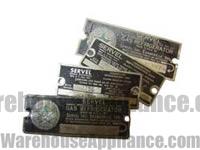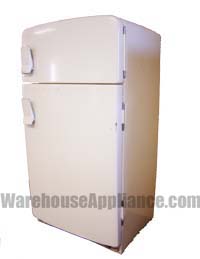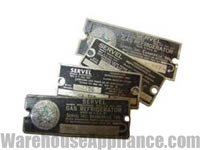Everything You Wanted To Know About Servel Gas Refrigerators
Gas refrigerators have been in production since the early 1900’s and used in households as a standard common everyday appliance until the late 1950’s when electricity and electric refrigerators became the normal. Although they were not as common as an electric refrigerator after that , they did not go extinct. The popularity continued with the use being primarily in cabins, ranches, out buildings, and vacation homes that did not have on grid electricity available. The most popular of the production units available in the 1940’s was the SERVEL Brand. Many different models were produced. The typical capacity of Servel was between 8 and 10 cubic feet. Some units were of a single door type with a small freezer section on the interior. More deluxe later models included double exterior doors with the freezer on top. Some rare models have double side by side doors. We have seen some models that have electric options such as interior lights and even electric ice makers. The units were very well insulated and made of mostly steel construction. Life span of the unit can easily reach over 60 years.
 The down fall to these old gas refrigerators is the burner design. The burners were designed to run at around 3500 BTU which is double the output of a modern day propane gas refrigerator. The burner design is not as efficient as the newer models and were very susceptible to burning foul and putting off high levels of carbon dioxide and carbon monoxide. Considering the era in which they were designed and the materials available, it is understandable that they are not as efficient and safe as today’s propane fridges. This inefficiency resulted in a government recall. The recall offers a $100.00 payment for the disposal of each refrigerator. If you are the owner of one of these units and would like to benefit from the recall, call the Servel Action Committee at 800-782-7431 and request Recall Packet to be mailed to you. You will also be reimbursed for transportation costs associated with the disposal. Save your receipt to file with the form. You will also need to remove and mail in the ID tags from the fridge chassis and cooling absorption unit.
The down fall to these old gas refrigerators is the burner design. The burners were designed to run at around 3500 BTU which is double the output of a modern day propane gas refrigerator. The burner design is not as efficient as the newer models and were very susceptible to burning foul and putting off high levels of carbon dioxide and carbon monoxide. Considering the era in which they were designed and the materials available, it is understandable that they are not as efficient and safe as today’s propane fridges. This inefficiency resulted in a government recall. The recall offers a $100.00 payment for the disposal of each refrigerator. If you are the owner of one of these units and would like to benefit from the recall, call the Servel Action Committee at 800-782-7431 and request Recall Packet to be mailed to you. You will also be reimbursed for transportation costs associated with the disposal. Save your receipt to file with the form. You will also need to remove and mail in the ID tags from the fridge chassis and cooling absorption unit.
Although these units have a great retro look to them, they are not as safe as what is available today. The units of today also have many more features not invented in the 1940’s. Here at Warehouse Appliance, we painted one up and use it for a storage cabinet in a vacation home. It makes a great conversation piece. Read about more history of LP fridges.





